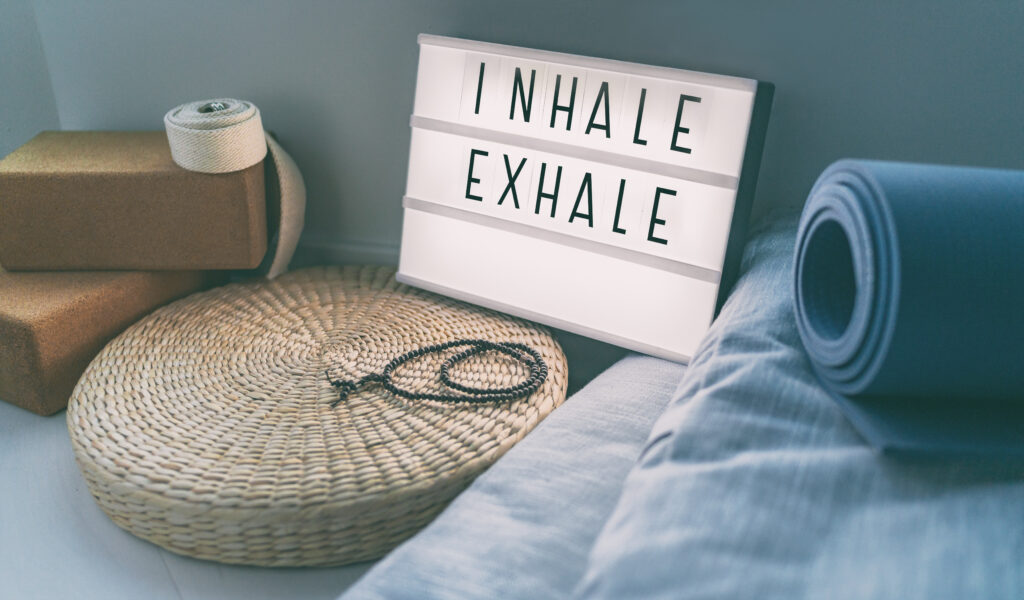
Before the Pandemic, I was completely opposed to doing psychotherapy online but then I was forced to choose between closing my therapy practice or switching to virtual sessions. Obviously there were real safety concerns and it wasn’t safe to be in-person. I had never been a fan of telehealth even though many of my therapist colleagues and their clients loved it and even preferred it to in-person psychotherapy. Perhaps I’m “old-school,” evidenced by my paper planner and checkbooks in my purse but I’m fine with that label. I’m writing this blog not in the spirit of saying bad things about online therapy, but I instead to share my thoughts about the benefits of in-person psychotherapy. Many therapists like the convenience of providing teletherapy sessions from their home and no longer have a business location. Similarly, many clients enjoy not having to drive to their therapist’s office, and love having their cat next to them as they do the therapy session on their laptop. The main benefit of online sessions is the convenience factor. In fact, I really can’t think of another benefit of teletherapy other than it saves time and effort. It’s actively inconvenient to do in-person psychotherapy sessions for sure. Perhaps for some types of therapy, it truly doesn’t make a difference whether the sessions are done in-person or online. However, for the types of issues I’m helping people with as well as the modalities I use, in-person sessions are far more effective.
I want to give you some examples and more information to further explain my reasons for preferring in-person therapy. Many clients I see struggle with Complex Post Traumatic Stress Disorder (otherwise known as C-PTSD) which basically means they endured ongoing childhood abuse and neglect by their parents who are the very people that were supposed to protect them. They grew up with repeated broken promises, being yelled at, and shamed just for being themselves. They were wounded within relationship and so as adults they have trouble trusting others, especially intimate partners. The number one factor in therapy that predicts successful outcomes has nothing to do with a specific approach or technique but rather the quality of the therapeutic relationship itself. Having an honest, reliable, compassionate, and non-judgmental therapist provides a reparative relationship otherwise known as secure attachment for the client. Sometimes, the relationship with the therapist is the ONLY secure attachment a client has ever had. Over time, the client learns to trust the therapist and the therapeutic relationship becomes the main agent of change. Once the client experiences secure attachment within the therapeutic relationship, he or she can then recognize it in other relationships such as friends or romantic partners and end relationships when they are unhealthy. When we are wounded within relationship, we need to heal through relationship. We can’t do this work alone; we need each other.

When we are in the physical presence of someone, we are able to connect more easily. It’s one of those things that’s hard to put your finger on but it’s very real. Think about how you can get a feel for someone’s “vibe” when you physically interact with them compared to a conversation through video chat. I’m a better therapist when I see clients in-person because I can feel their “energy.” That may sound pretty new-agey but it’s true. When I’m doing in-person psychotherapy, I can read the client’s body language on their whole body, not just their facial expressions and hand gestures as it often is with online sessions. I can also make real eye contact with the client which is so important for connection. Eye contact is impossible with teletherapy because even if I’m looking right at the client’s eyes on the screen, they don’t experience it that way. It’s the little camera on the computer that I would need to look at if I want the client to feel that I’m actually seeing them, but it’s an illusion since I’m not seeing them at all in that moment. Another important piece I want to mention is that I need to be able to watch the client’s breathing pattern which can be subtle and requires careful attention which is almost impossible to do unless I actually have the client in front of me in-person. Some things just don’t translate through a computer screen and the technology creates a barrier to closer connection. Some clients, especially those with C-PTSD are afraid of that intimate connection and would rather stay within the safety of their home. I can understand that urge to protect themselves to avoid being vulnerable. However, therapy is about growing, changing and healing and we can’t do that if we stay within our comfort zones.

As for specific techniques I use regularly with clients, I have found that doing any kind of experiential exercise such as guided imagery is much more effective when done in person. I also use a physical gadget for bilateral stimulation that enhances anything that is being processed in the session, and being in-person psychotherapy is required for that. When an experiential modality is used, sometimes strong emotions come up and I need to be able to help clients emotionally regulate if they get overwhelmed. Often this regulation involves inviting the client to stand up and do some simple movements with me while we breathe together. (Side note: slow, deep breathing is the best way to regulate a dysregulated nervous system which is one of the inevitable effects of Complex PTSD). Additionally, some clients routinely do some gentle yoga or restorative yoga while I walk them through a body scan or breathing exercise, and all of these things work much better in-person because I am physically there with them. Just being in my office which is a safe, calming space is healing in and of itself, and since I’m there with them, they are not having their experience alone. All of this is too complicated and nuanced to be done within the framework of technology. In my experience, online sessions are best reserved for traditional talk therapy or more structured modalities. I also know there are trainings about best teletherapy practices and ways to get the most out of online therapy. However, the bottom line for me is that I can provide the best therapy when I’m in-person with a client and that is much more important than the convenience factor.
The Pandemic has had a huge impact on the quality of our relationships with other human beings and it’s going take time and effort to heal this rift. Real, live in-person interactions are vital to helping repair the emotional damage done by the Pandemic. As human beings we are hard-wired for connection in order to survive. We want and need to connect, even when we’ve been hurt in the past. In-person therapy is an important step in this process so if you don’t have a therapist yet and are looking, I encourage you to consider what you’ve read in this blog. Feel free to reach if you’d like to schedule your free consultation.
